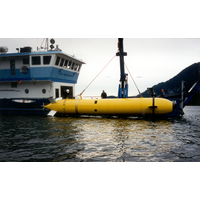
ISE Integrates XL UUV with Subsea Docking System
International Submarine Engineering Ltd. (ISE) announced the launch of our Revolutionary Subsea Surveillance Team, featuring the integration of our XL UUV and Subsea Docking System. This pairing offers unprecedented range and endurance, making surfacing optional, Canada-based ISE said.According to ISE, its docking system revolutionizes the management of autonomous underwater vehicles (AUV) at sea, eliminating the need for challenging and potentially hazardous recovery operations. The ISE dock enables seamless data transfer and recharging while the AUV remains submerged at depths up to 200 meters.
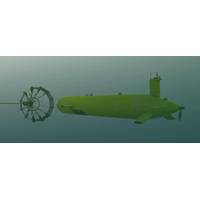
ISE Completes Phase 1B of Autonomous AUV Docking Test
International Submarine Engineering Ltd. (ISE) reports that it has successfully completed the second stage in the autonomous dock prototype project. This project is a joint project between Dalhousie University and ISE with funding provided by Innovation for Defence Excellence and Security (IDEaS).The dock provides a platform for an AUV to autonomously latch onto while remaining subsea. Once latched, the AUV can then charge its batteries and download the data for the operators. Then once that is complete, the AUV can unlatch and begin its next mission. This essentially eliminates the risks of launching
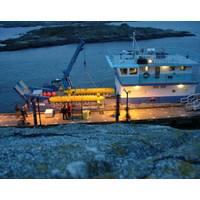
Exploring Under The ice (& Keeping your AUV in one piece)
of factors led to these successful operations, and in this article we’ll discuss some of the inherent dangers of working under polar ice and how they were mitigated.Why are under AUV missions challenging?Every time an AUV descends to explore unknown regions, there is aPhoto: International Submarine Engineering Ltd. chance it can be lost. Even for AUVs the ocean is not a friendly place. The terrain it navigates is only partially mapped at high resolution; we know more about the surface of Mars than we do about our ocean floors.This said, there are ways to minimise the risks. There is always
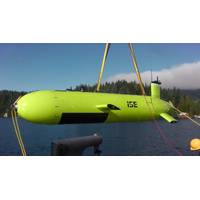
ISE Sells 6000m-rated AUV to China
Canadian underwater systems and robotics manufacturer International Submarine Engineering Ltd. (ISE) announced it has sold its latest ISE Explorer autonomous underwater vehicle (AUV) to China Ocean Mineral Resource R&D Association (COMRA). This ISE Explorer AUV is the first rated for operations at 6,000 m depth.The modular design of the ISE Explorer enables it to carry multiple payloads in its spacious, swappable, and customizable payload section including Multibeam Echosounders, Sidescan Sonars, Sub-bottom Profilers, Synthetic Aperture Sonars, High Definition Cameras and Laser Systems, CTDs and
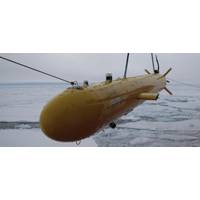
Arctic Explorer AUV Ordered in Australia
International Submarine Engineering Ltd. has signed a contract to build a 5,000 meter depth Explorer class autonomous underwater vehicle (AUV) for the University of Tasmania (UTAS) and the Australian Research Council (ARC) Antarctic Gateway Partnership project. This Explorer will be ISE’s fourth under-ice capable AUV that builds on the success of Theseus and the two Arctic Explorer vehicles owned and operated by Natural Resources Canada. This Explorer is destined for the Australian Maritime College, a specialist institute of UTAS, and will be used by the Antarctic Gateway
Kraken Announced Executive Appointments
. in mechanical engineering from the University of Notre Dame. Millar has over 10 years of system engineering experience with underwater vehicles including autonomous underwater vehicles (AUVs), remotely operated vehicle (ROVs) and underwater rescue systems. She joins Kraken from International Submarine Engineering Ltd (ISE) in Port Coquitlam, B.C., where she was lead engineer on several underwater vehicles including deepwater survey AUVs, Arctic survey AUVs and working class hydraulic-electric ROVs. Millar holds a Bachelor of Applied Science in systems engineering from Simon Fraser University
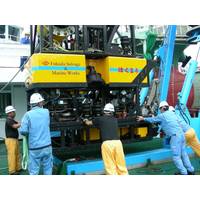
ISE to Build Another ROV for Fukada
International Submarine Engineering Ltd announced the contract to build a 50HP 3,000 M Depth HYSUB ROV for Fukada Salvage and Marine Works, Japan. The Fukada HYKUYO HYSUB 50-3000 is a versatile and capable medium duty work-class ROV. The vehicle will be outfitted with two manipulators, one seven-function and one four-function along with assorted tooling for a broad range of operational capabilities. Vehicle sub-systems include a HD color zoom camera, a low light camera, four POV cameras, a variable frequency scanning sonar, an altimeter, and DVL. This ROV will also be outfitted with a toolsled
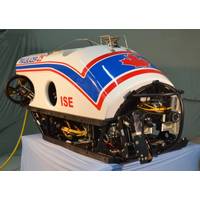
Canadian Navy Anti-mine ROV Refit
The Canadian Navy’s Mine-Countermeasures (MCM) Remotely Operated Vehicle (ROV) is ready to be returned to the customer after its recent refit by International Submarine Engineering Ltd. TrailBlazer, a 25 HP vehicle has been in operation with the Canadian Navy since 1995. TrailBlazer 25 is within a non-expendible family of ISE MCM ROVs that are capable of detecting long or short tethered mines as well as bottom mines. TrailBlazer is the only MCM ROV capable of breakouts, utilizing the streamlined ROV at high speed. TrailBlazer is also equipped with a mini five-function manipulator and a
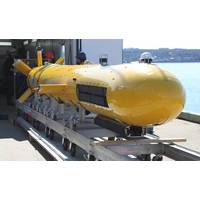
Kraken Assists Search for 1845 Arctic Shipwreck
evidence of Franklin's lost ships. Defence Research and Development Canada (DRDC), an agency of the Department of National Defence, is involved in some technologies that will be used in the expedition. The Arctic Explorer, for example, is an Autonomous Underwater Vehicle (AUV) made by International Submarine Engineering Ltd, and equipped with an ultra high-resolution AquaPix Interferometric Synthetic Aperture Sonar (INSAS) produced by Kraken. This year, DRDC will conduct a series of experiments on the performance of sonar imaging technologies in extremely low water temperatures. Kraken’s AquaPix
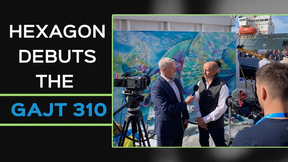
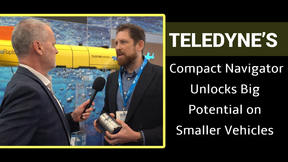
 February 2025
February 2025





